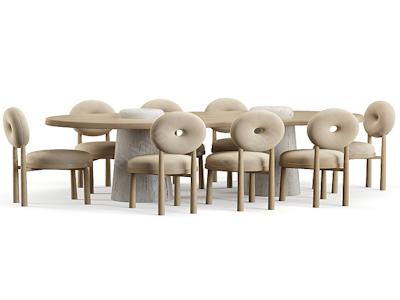Эко тренды в производстве современной посуды

В современном мире, где экологические проблемы становятся все более актуальными, производство посуды не остается в стороне от глобальных трендов устойчивого развития. Эко-посуда – это не просто мода, а необходимость, driven by increasing consumer awareness and regulatory pressures. В этой статье мы подробно рассмотрим ключевые экологические тренды в производстве современной посуды, их преимущества, вызовы и будущие перспективы. Мы начнем с обзора исторического контекста, перейдем к современным материалам и технологиям, а затем обсудим рыночные тренды и рекомендации для производителей и потребителей.
Исторический контекст: от традиционной к экологичной посуде
Производство посуды имеет долгую историю, начиная с древних времен, когда люди использовали природные материалы like clay, wood, and stone. В индустриальную эру произошел shift к массовому производству с использованием plastics and ceramics, которые often involved harmful chemicals and high energy consumption. Однако в последние десятилетия, с ростом осознания environmental issues, such as pollution and resource depletion, индустрия начала двигаться к более sustainable practices. Ключевым моментом стало introduction of eco-friendly materials and processes in the late 20th and early 21st centuries, spurred by initiatives like the Circular Economy and Green Manufacturing.
Например, в 1970-х годах появились первые biodegradable plastics, but они были дорогими и неэффективными. С 2000-х годов, благодаря advancements in material science, мы видим surge in innovations like bamboo-based tableware and recycled glass. Этот historical shift highlights how consumer demand and technological progress have driven the evolution towards eco-trends in dishware production.
Современные экологические материалы в производстве посуды
Одним из самых prominent трендов является использование биоразлагаемых и compostable материалов. Bamboo, for instance, is a fast-growing renewable resource that requires minimal water and pesticides. Посуда из бамбука lightweight, durable, and can be composted after use, reducing landfill waste. Другие popular materials include corn starch-based plastics (PLA), which are derived from renewable sources and break down under industrial composting conditions. Additionally, there is a growing use of recycled materials, such as recycled glass and ceramics, which reduce the need for virgin resources and lower carbon footprints.
Например, companies like Eco-Products and World Centric производят посуду из кукурузного крахмала, которая полностью biodegraduje within months. В contrast, traditional plastics can take hundreds of years to decompose. Moreover, innovations in ceramic production have led to lead-free glazes and energy-efficient kilns, making pottery more environmentally friendly. Эти материалы not only minimize environmental impact but also appeal to health-conscious consumers who avoid chemicals like BPA found in some plastics.
Энергоэффективные технологии и процессы производства
Beyond materials, production processes themselves are becoming greener. Manufacturers are adopting energy-efficient technologies, such as solar-powered kilns for ceramics and water recycling systems in glass production. For instance, in glass manufacturing, up to 30% of energy can be saved by using recycled cullet instead of raw materials. Additionally, lean manufacturing techniques reduce waste and improve resource efficiency.
Automation and IoT (Internet of Things) are also playing a role; smart sensors optimize energy use in factories, minimizing carbon emissions. Case studies from companies like IKEA show how investing in renewable energy for production can significantly lower the environmental footprint of dishware. These technological advancements are crucial for scaling eco-friendly production without compromising on quality or cost.
Рыночные тренды и потребительский спрос
Consumer preferences are a major driver of eco-trends in dishware. Surveys indicate that over 60% of consumers are willing to pay more for sustainable products. This demand has led to a proliferation of eco-brands and certifications, such as USDA Organic or Cradle to Cradle, which assure customers of environmental credentials. Social media and influencer marketing have amplified this trend, making eco-friendly dishware a status symbol among millennials and Gen Z.
However, challenges remain, such as higher costs compared to conventional options and greenwashing—where companies make false environmental claims. To address this, transparency and education are key. Producers must provide clear information about material sourcing and lifecycle impacts, while consumers should be encouraged to make informed choices through campaigns and labeling.
Вызовы и барьеры для внедрения эко-трендов
Despite the progress, there are significant barriers to widespread adoption of eco-trends. Cost is a primary issue; eco-materials often require more expensive raw materials and processes, leading to higher retail prices. Additionally, infrastructure for composting and recycling is lacking in many regions, limiting the effectiveness of biodegradable products. Technical challenges also exist, such as ensuring durability and food safety in new materials like PLA plastics, which may not perform as well as traditional options in all conditions.
Regulatory hurdles vary by country; for example, strict standards for compostable products can slow down innovation. To overcome these, collaboration between governments, industries, and NGOs is essential. Subsidies for green technologies and public awareness campaigns can help accelerate the transition.
Будущие перспективы и инновации
The future of eco-dishware looks promising with ongoing innovations. Research into new materials, such as algae-based plastics or mycelium (mushroom) packaging, could revolutionize the industry. Digital technologies like 3D printing allow for on-demand production, reducing waste from overmanufacturing. Moreover, the circular economy model, where products are designed for reuse and recycling, is gaining traction.
In the coming decades, we may see fully closed-loop systems where dishware is endlessly recycled without loss of quality. Consumer trends towards minimalism and zero-waste lifestyles will further drive demand. Ultimately, the goal is to create a sustainable dishware industry that balances environmental health, economic viability, and social equity.
Заключение и рекомендации
В заключение, эко тренды в производстве посуды represent a critical shift towards sustainability, driven by material innovations, technological advancements, and consumer demand. To capitalize on this, producers should invest in R&D for new materials, adopt energy-efficient processes, and enhance transparency. Consumers can support this by choosing certified products and advocating for better infrastructure. Governments play a role through policies that incentivize green manufacturing. Together, these efforts can ensure that the dishware industry contributes positively to planetary health.
Для дальнейшего чтения, рекомендую обратиться к ресурсам如 Ellen MacArthur Foundation на тему circular economy и отчетам Sustainable Packaging Coalition. Спасибо за внимание к этой важной теме!

